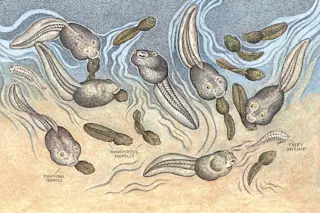I was knee-deep in a temporary pond that seemed to be composed of equal parts rainwater and cow dung when the cannibals began nibbling on my leg hair.
“If you stand still for long enough, they’ll definitely nip you,” came a voice from the shore.
“They” were cannibalistic spadefoot toad larvae, commonly known as tadpoles. The warning had come from David Pfennig, a biology professor at the University of North Carolina who had been studying these toads in Arizona’s Chiricahua Mountains for more than 20 years.
At Pfennig’s invitation, I had arrived at the American Museum of Natural History’s Southwestern Research Station in mid-July — just after the early summer monsoons had turned cattle wallows into nursery ponds and newly hatched tadpoles into cannibals. But the real reason I had come to the ancestral land of the Chiricahua Apaches wasn’t because the tadpoles were eating each other. It was because ...














